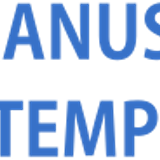MICROBIAL EOR STUDY TO IMPROVE SWEEP EFFICIENCY IN CALTEX FIELDS PHASE 1 – NUTRIENT SELECTION
Abstract
Keywords
Full Text:
PDFReferences
American Standards D 5464-93 “Standard Practice for Determining Microbial Colony
Counts from Waters Analyzed by Plating Methods”.
American Standards D 445-88 "Standard Test Method for Kinematic Viscosity of
Transparent and Opaque Liquids"
Anonim, 1972, Food Composition Table for Use in East Asia, U.S Department of
Health, Education, and Welfare U.S. p: 6-101.
Bae, J.H., and Lee, H.O., 1995, A Study of Microbial Profile Modification, in Bryant
and Sublette (Eds.), The Fifth International Conference on Microbial Enhanced Oil
Recovery and Related Biotechnology for Solving Environmental Problems, Oklahoma,
pp. 375 - 388.
Jenneman, G.E., et al., 1994, Application of a Microbial Selective Plugging Process at
the North Burbank Unit: Prepilot Tests and Results, SPE Paper No. 27827.
Jenneman, G.E., et al., 1995, Development and Application of Microbial Selective
Plugging Processes, in Bryant and Sublette (Eds.). The Fifth International Conference
on Microbial Enhanced Oil Recovery and Related Biotechnology for Solving
Environmental Problems, Oklahoma, pp. 7-27.
Portwood,J.T. "A Commercial Microbial Enhanced Oil Recovery Technology
Evaluation of 322 Projects", 1995, SPE Paper No. 29518, pp. 693 - 708.
Sarkar, A.K., et al., 1995, Strength and Stability of Microbial Plugs in Porous Media,
in Bryant and Sublette (Eds.). The Fifth International Conference on Microbial
Enhanced Oil Recovery and Related Biotechnology for Solving Environmental
Problems, Oklahoma, pp. 213-234.
Stepp, A.K., et al., 1995, Biopolymer System for Permeability Modification in Porous
Media, in Bryant and Sublette (Eds.), The Fifth International Conference on Microbial
Enhanced Oil Recovery and Related Biotechnology for Solving Environmental
Problems, Oklahoma, pp. 389- 406.
Stepp. A.K. 1997, "Biotechnology : Alternative Permeability Modification Methods".
Journal of Petroleum Technology. pp. 280- 281
Zhong, L and Islam, M.R., 1995, "A New Microbial Plugging Process and Its Impact
on Fracture Remediation". SPE Paper No. 30159, pp. 703- 715
DOI: https://doi.org/10.29017/SCOG.25.2.1067

This work is licensed under a Creative Commons Attribution-NonCommercial-NoDerivatives 4.0 International License.






